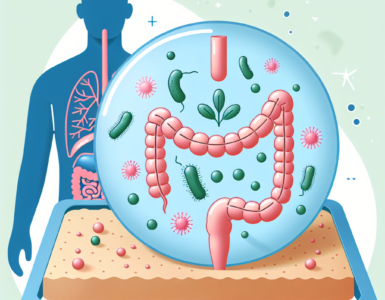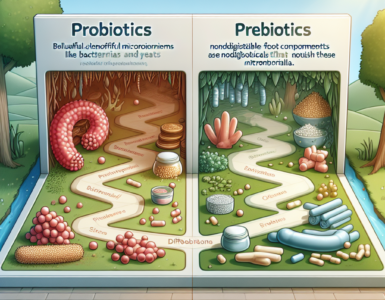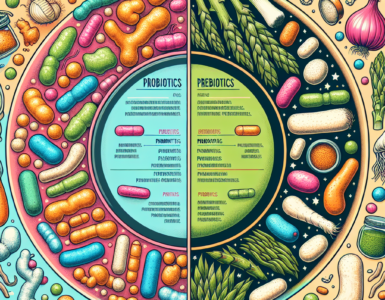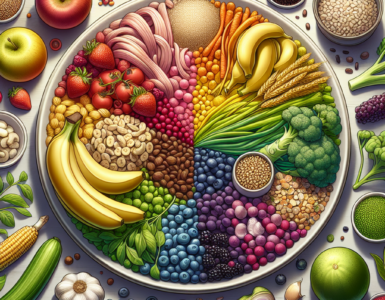Introduction to Low Glycemic Index Foods
Understanding the types of food that fuel the body efficiently is crucial for active individuals who demand consistent energy throughout their physical activities. One key concept in nutrition that supports sustained energy is the glycemic index (GI).
What is the Glycemic Index?
The Glycemic Index is a ranking system that classifies carbohydrate-containing foods by their impact on blood sugar levels. It ranges from 0 to 100, with higher values assigned to foods that cause rapid spikes in blood glucose levels. Foods are categorized as low, medium, or high GI:
| GI Range | Classification |
|---|---|
| 55 or less | Low GI |
| 56 – 69 | Medium GI |
| 70 or more | High GI |
Low GI foods are digested and absorbed at a slower rate, resulting in a gradual rise in blood sugar and insulin levels. In contrast, high GI foods are processed quickly by the body, leading to a swift increase in blood glucose and a subsequent rapid decline.
Importance of Low GI Foods for Energy Management
For individuals who are active, consuming low glycemic index meal ideas can be particularly beneficial. These foods provide a steady supply of glucose to the bloodstream, ensuring a consistent energy source for muscles and brain function during physical activity. Stability in blood sugar levels can also help in managing appetite and reducing cravings, which is vital for athletes and fitness enthusiasts who need to maintain focus and energy.
Low GI foods are instrumental in preventing the common ‘crash’ associated with high GI foods, which can lead to fatigue and decreased performance. By integrating low GI foods into their diet, active individuals can enhance their endurance and maintain higher energy levels for prolonged periods.
In summary, the glycemic index serves as a guide to help individuals select foods that promote steady energy release. Incorporating low GI foods into meal plans is a strategic approach to energy management, which can lead to improved performance in sports and physical activities.
Benefits of Low GI Meals for Active Individuals
Active individuals strive for optimal performance, and the benefits of low glycemic index (GI) meals play a significant role in achieving their fitness goals. These benefits range from maintaining energy levels to improving overall health.
Sustained Energy for Optimal Performance
Low GI foods are digested and absorbed at a slower pace, which leads to a gradual release of glucose into the bloodstream. This steady energy release is crucial for individuals engaged in long-duration sports or workouts, as it helps maintain endurance and concentration levels.
| Food Type | GI Range |
|---|---|
| High GI Foods | 70 and above |
| Medium GI Foods | 56-69 |
| Low GI Foods | 55 and below |
Choosing low GI meal options can help athletes and fitness enthusiasts avoid the rapid spikes and drops in blood sugar that can result in energy slumps and decreased performance.
Better Blood Sugar Control
Maintaining consistent blood sugar levels is not only important for energy, but it is also critical for metabolic health. Low GI meals contribute to more stable blood sugar levels, reducing the risk of insulin resistance and type 2 diabetes. This is particularly beneficial for active individuals who need to manage their energy levels and recovery times efficiently.
Long-term Health Advantages
Incorporating low GI foods into one’s diet can also have long-term health benefits. These foods are often rich in nutrients and can contribute to a reduced risk of chronic diseases such as heart disease and certain cancers. Furthermore, they can aid in weight management, as they help control appetite and delay hunger cues.
| Health Benefit | Description |
|---|---|
| Weight Management | Low GI foods can help manage appetite and reduce body fat. |
| Heart Health | Low GI diets are associated with improved cholesterol levels. |
| Disease Prevention | Consistent blood sugar levels may lower the risk of developing type 2 diabetes. |
Emphasizing low glycemic index meal ideas in a diet can be a strategic approach for active individuals to enhance their performance while also benefiting their overall health.
Building Blocks of Low GI Meals
Creating meals that have a low glycemic index (GI) is essential for individuals looking to manage their energy levels, especially for those engaged in regular physical activity. The glycemic index is a ranking system for carbohydrates based on their immediate impact on blood glucose levels. Understanding how to select the right components for a low GI meal is crucial for sustained energy and overall health.
Selecting the Right Carbohydrates
Carbohydrates are the primary energy source for the body, but not all carbs are created equal. Low GI carbohydrates are digested and absorbed slowly, leading to a gradual rise in blood sugar and insulin levels. This is beneficial for maintaining energy levels and preventing sudden spikes and crashes in blood sugar.
When planning a meal, it’s important to choose carbohydrates that are low on the glycemic index. Foods like whole grains, legumes, and certain fruits and vegetables are excellent choices. The table below lists some common low GI carbohydrates and their corresponding GI values:
| Food | Glycemic Index (GI) |
|---|---|
| Oatmeal | 55 |
| Quinoa | 53 |
| Lentils | 32 |
| Apples | 36 |
| Carrots | 39 |
Incorporating Proteins and Fats
Proteins and fats play a vital role in a balanced diet, particularly in low GI meals. They can slow down the absorption of carbohydrates, leading to more stable blood sugar levels and prolonged energy release. This is beneficial for active individuals who need consistent energy for their workouts and day-to-day activities.
Including a source of lean protein such as chicken, fish, tofu, or beans can help create a more balanced meal. Healthy fats from sources like avocados, nuts, seeds, and olive oil not only add flavor but also contribute to the feeling of satiety and further moderate the GI of a meal.
Understanding Fiber’s Role
Fiber is a type of carbohydrate that the body cannot digest, and it plays a key role in creating low GI meals. High-fiber foods, such as vegetables, fruits, whole grains, and legumes, have a lower GI because they are digested more slowly. Fiber can help to slow the release of glucose into the bloodstream, providing a steady source of energy.
It’s important to include a variety of fiber-rich foods in one’s diet to gain the full benefits. The table below highlights some fiber-rich foods and their fiber content:
| Food | Fiber (grams per serving) |
|---|---|
| Black Beans | 15g per cup |
| Chia Seeds | 10g per ounce |
| Broccoli | 5g per cup |
| Almonds | 3.5g per ounce |
| Whole Wheat Bread | 2g per slice |
In summary, the foundation of low glycemic index meal ideas lies in choosing slow-releasing carbohydrates, combining them with quality proteins and fats, and ensuring a good intake of dietary fiber. These elements work synergistically to provide sustained energy, making them ideal for athletes and active individuals. By understanding the building blocks of low GI meals, one can better manage their energy and blood sugar, ultimately supporting their performance and long-term health.
Meal Ideas for Pre-Workout Nutrition
For individuals engaged in regular physical activity, selecting the right pre-workout nutrition is essential. Low glycemic index (GI) meal ideas can provide the sustained energy necessary for optimal performance without the rapid spike and crash in blood sugar levels.
Breakfast Options to Kickstart Your Day
A well-balanced breakfast is vital to fuel the body for the day ahead, especially before engaging in exercise. Breakfasts with low GI values are beneficial as they release glucose more slowly into the bloodstream.
Here are some breakfast ideas that are not only delicious but also have a lower glycemic impact:
-
Oatmeal with Nuts and Berries: Start your day with a bowl of steel-cut oats topped with a handful of berries and nuts. This meal is high in fiber and protein, keeping you full and energized for longer periods.
-
Greek Yogurt Parfait: Layer Greek yogurt with a sprinkle of granola and fresh fruits for a tasty and nutritious breakfast. The protein in the yogurt and the fiber from the fruits make this a low GI choice.
-
Scrambled Eggs and Spinach on Whole-Grain Toast: Eggs are a great source of protein, and when combined with spinach and served on whole-grain bread, it becomes a power-packed, low GI breakfast.
-
Smoothie Bowl: Blend leafy greens, a scoop of protein powder, some chia seeds, and a small serving of fruit for a refreshing and energizing smoothie bowl.
| Breakfast Idea | Key Ingredients | GI Score (Approx.) |
|---|---|---|
| Oatmeal with Nuts and Berries | Steel-cut oats, mixed berries, nuts | Low |
| Greek Yogurt Parfait | Greek yogurt, granola, fresh fruits | Low to Medium |
| Scrambled Eggs and Spinach on Whole-Grain Toast | Eggs, spinach, whole-grain bread | Low |
| Smoothie Bowl | Leafy greens, protein powder, chia seeds, fruit | Low to Medium |
Snacks for Lasting Energy
Snacking is a great way to manage energy levels, especially before a workout. Here are snack ideas that provide a steady release of energy:
-
Apple Slices with Almond Butter: The classic combination of fruit and nuts offers fiber, healthy fats, and protein, making it a great low GI snack.
-
Hummus and Veggie Sticks: Hummus made from chickpeas is a low GI food, and when paired with vegetables like carrots and cucumbers, it makes for a crunchy and satisfying snack.
-
Mixed Nuts and Seeds: A small handful of mixed nuts and seeds can give you a boost of energy without spiking your blood sugar.
-
Whole-Grain Crackers with Cheese: The fiber in whole-grain crackers and the protein in cheese create a balanced snack with a lower glycemic impact.
| Snack Idea | Key Ingredients | GI Score (Approx.) |
|---|---|---|
| Apple Slices with Almond Butter | Apple, almond butter | Low |
| Hummus and Veggie Sticks | Chickpeas, raw vegetables | Low |
| Mixed Nuts and Seeds | Almonds, walnuts, pumpkin seeds | Low |
| Whole-Grain Crackers with Cheese | Whole-grain crackers, cheese | Low to Medium |
By incorporating these low glycemic index meal ideas into your pre-workout routine, you can ensure that your body has the necessary fuel for endurance and performance. Remember to listen to your body’s cues and adjust portion sizes and timing to suit your individual needs and activity levels.
Post-Workout Meals for Recovery
Replenishing energy stores and repairing muscles after a workout is crucial for individuals engaged in physical activities. Meals with a low glycemic index (GI) can be particularly beneficial in these instances, as they provide a steady release of glucose into the bloodstream, aiding in recovery and preventing energy crashes.
Lunch Ideas for Replenishment
Post-workout lunches should be a mix of low GI carbohydrates, proteins, and healthy fats to ensure efficient energy replenishment and to start the muscle repair process. Here are some meal ideas that combine these elements:
- Grilled chicken breast with quinoa salad: Quinoa has a GI score of around 53, making it a good low GI carb source. Accompanied by protein-rich chicken, it makes for a balanced post-workout meal.
- Lentil and sweet potato stew: Lentils have a GI score of 32, and sweet potatoes score around 54. Together, they provide a hearty, nutrient-dense option for recovery.
- Turkey and avocado wrap with whole grain tortillas: With whole grain tortillas coming in at a GI of approximately 30, this meal provides lean protein and healthy fats for post-exercise recovery.
Dinners to Aid Muscle Repair
Dinner meals should continue to support muscle repair and recovery while ensuring that the body is replenished with all the necessary nutrients it needs to repair and build muscle tissue.
- Baked salmon with wild rice: Wild rice, with a GI score of 45, served with omega-3 rich salmon, supports muscle repair and has anti-inflammatory properties.
- Stir-fried tofu with mixed vegetables over barley: Tofu provides a plant-based protein source, while barley has a GI of 25, making this a satisfying low GI dinner.
- Beef and vegetable skewers with pearl couscous: Lean beef offers high-quality protein for muscle repair, and pearl couscous, with a GI score of around 52, provides sustained energy release.
By focusing on meals that combine low GI carbohydrates, high-quality proteins, and healthy fats, active individuals can support their body’s recovery process after workouts and maintain optimal performance in their activities.
Snack Ideas for Sustained Energy Throughout the Day
Active individuals often require snacks that not only satiate hunger but also provide sustained energy to fuel their activities. Low glycemic index (GI) snacks are excellent for this purpose as they are digested and absorbed more slowly, resulting in a gradual rise in blood sugar and insulin levels.
Smart Snacking for Active Lifestyles
When choosing snacks, it’s important to combine low GI carbohydrates with proteins, healthy fats, and fiber to enhance the overall nutritional profile and ensure longer-lasting energy. Here are some smart snack ideas that fit the criteria:
- Fresh Fruit and Nut Butter: Apples or pears with almond or peanut butter can be a satisfying snack with a good balance of fiber, protein, and healthy fats.
- Greek Yogurt with Berries: A high-protein yogurt with low GI berries provides a creamy, filling snack that’s rich in antioxidants.
- Hummus and Veggies: Raw vegetables like carrots, bell peppers, and cucumber paired with hummus offer a crunchy and nutritious option with plenty of fiber and protein.
- Nuts and Seeds: A handful of mixed nuts or seeds can provide a quick, nutrient-dense snack that’s easy to carry around.
- Cheese and Whole Grain Crackers: The combination of cheese with whole grain crackers gives a satisfying crunch with the benefit of slow-release carbohydrates and protein.
- Roasted Chickpeas: These are a high-fiber, high-protein snack that’s also rich in complex carbohydrates.
- Oatmeal with Nuts: A small bowl of oatmeal topped with a variety of nuts provides soluble fiber and is especially good for a pre-activity energy boost.
Here is a table with examples of low GI snack options and their GI values:
| Snack Idea | Estimated GI Value |
|---|---|
| Apple with Almond Butter | Low (55 or less) |
| Greek Yogurt with Blueberries | Low (55 or less) |
| Carrots with Hummus | Low (55 or less) |
| Mixed Nuts | Low (55 or less) |
| Cheese with Whole Grain Crackers | Medium (56 – 69) |
| Roasted Chickpeas | Low (55 or less) |
| Oatmeal with Walnuts | Low (55 or less) |
By incorporating these low glycemic index meal ideas into your snack routine, you can maintain your energy levels throughout the day, avoid spikes in blood sugar, and stay on track with your fitness and health goals. It’s essential to listen to your body’s hunger and fullness cues and choose snacks that not only satisfy your taste buds but also support your active lifestyle.
Crafting Balanced Low GI Meals
The creation of balanced low glycemic index (GI) meals is a cornerstone for those pursuing a stable and sustained energy release throughout their active days. Understanding how to manage portion sizes, meal timing, and the combination of foods is essential for maintaining energy levels and optimal blood sugar control.
Portion Sizes and Meal Timing
The amount of food consumed and the timing of meals play a pivotal role in how the body manages energy. Eating smaller, more frequent meals can help maintain a consistent blood sugar level, preventing the spikes and crashes that can occur with larger, less frequent meals. Individuals should aim to include a mix of low GI carbohydrates, proteins, and healthy fats in each meal to promote satiety and sustained energy release.
| Meal | Suggested Portion Size | Low GI Carbohydrates | Protein | Healthy Fats |
|---|---|---|---|---|
| Breakfast | Medium | 1/2 cup cooked oatmeal | 2 eggs | 1/4 avocado |
| Lunch | Medium-Large | 1 cup quinoa | 4 oz grilled chicken | 1 tbsp olive oil dressing |
| Dinner | Medium | 3/4 cup brown rice | 4 oz salmon | 2 tsp flaxseeds |
Snacks should also be well-timed, ideally mid-morning and mid-afternoon, to prevent dips in energy. A balance of macronutrients is key, with a focus on fiber-rich foods to further stabilize blood sugar levels.
Combining Foods for Optimal GI Balance
Combining high GI foods with low GI foods can help to balance the overall glycemic impact of a meal. Adding proteins, fats, and fiber to a meal can slow the digestion of carbohydrates, leading to a more gradual rise in blood sugar. This strategy is beneficial not just for athletes, but for anyone looking to maintain energy and focus throughout the day.
Consider the following combinations for maintaining a low GI balance:
- Pairing brown rice with leafy greens and a lean protein source.
- Adding nuts or seeds to a fruit-based snack to reduce the glycemic response.
- Serving whole grain bread with avocado and smoked turkey for a sandwich with a balanced GI.
In meal planning, it is not only about choosing the right foods but also combining them in a way that complements their GI effects. By doing so, individuals can enjoy varied, flavorful meals while reaping the benefits of sustained energy and stable blood sugar levels.
Tips and Tricks for Low GI Cooking and Meal Prep
Adopting a low glycemic index (GI) diet requires not just the right ingredients but also the proper cooking methods and meal planning strategies. These tips and tricks will help individuals maintain stable blood sugar levels, enjoy sustained energy, and optimize overall health while indulging in delicious meals.
Cooking Methods that Lower GI
The way food is prepared can affect its GI. Some cooking methods can lower the GI of a meal, making it a better choice for those seeking sustained energy and blood sugar management.
-
Steaming and Boiling: These methods are gentle on food and typically result in a lower GI compared to frying or roasting. Steaming vegetables preserves their natural fiber, which is crucial for slowing digestion and stabilizing blood sugar levels.
-
Al Dente Pasta: Cooking pasta until it is just ‘al dente’, or firm to the bite, helps keep the GI lower than if it were cooked until very soft.
-
Including Acidic Ingredients: Adding ingredients like vinegar or lemon juice to meals can slow the digestive process and lower the GI of the meal.
| Cooking Method | GI Impact |
|---|---|
| Steaming | Lowers GI |
| Boiling | Lowers GI |
| Al Dente | Lowers GI |
| Acidic Additions | Lowers GI |
Planning Your Meals Ahead of Time
Meal prepping is a practical approach that not only saves time but also ensures adherence to a low GI diet throughout the week. Here’s how individuals can plan their meals effectively:
-
Understand the GI of Foods: Have a list of low, medium, and high GI foods as a reference when planning meals.
-
Balance Your Plate: Aim for a balance of low GI carbohydrates, proteins, and healthy fats in each meal to maintain a stable GI.
-
Prepare in Batches: Cook batches of low GI grains like quinoa or barley and refrigerate for use throughout the week.
-
Smart Snacking: Prepare and portion out snacks such as nuts, yogurt, or chopped vegetables, so they are ready to grab and go.
-
Consistent Meal Times: Eating at regular intervals can help regulate blood sugar levels. Plan and prep meals and snacks to align with your schedule.
By employing these cooking methods and meal planning strategies, individuals can enjoy flavorful low glycemic index meal ideas that support their active lifestyle and contribute to better blood sugar control and long-term health.
Disclaimer: This content is provided for informational purposes only and is not intended as a substitute for professional medical advice, diagnosis, or treatment. Always seek the advice of your physician or other qualified health provider with any questions you may have regarding a medical condition, dietary changes, or fitness regimen. The information on this site is not designed to replace a healthcare professional’s independent judgment about the appropriateness or risks of a procedure or regimen for a given patient. Use of this information is at your own risk











